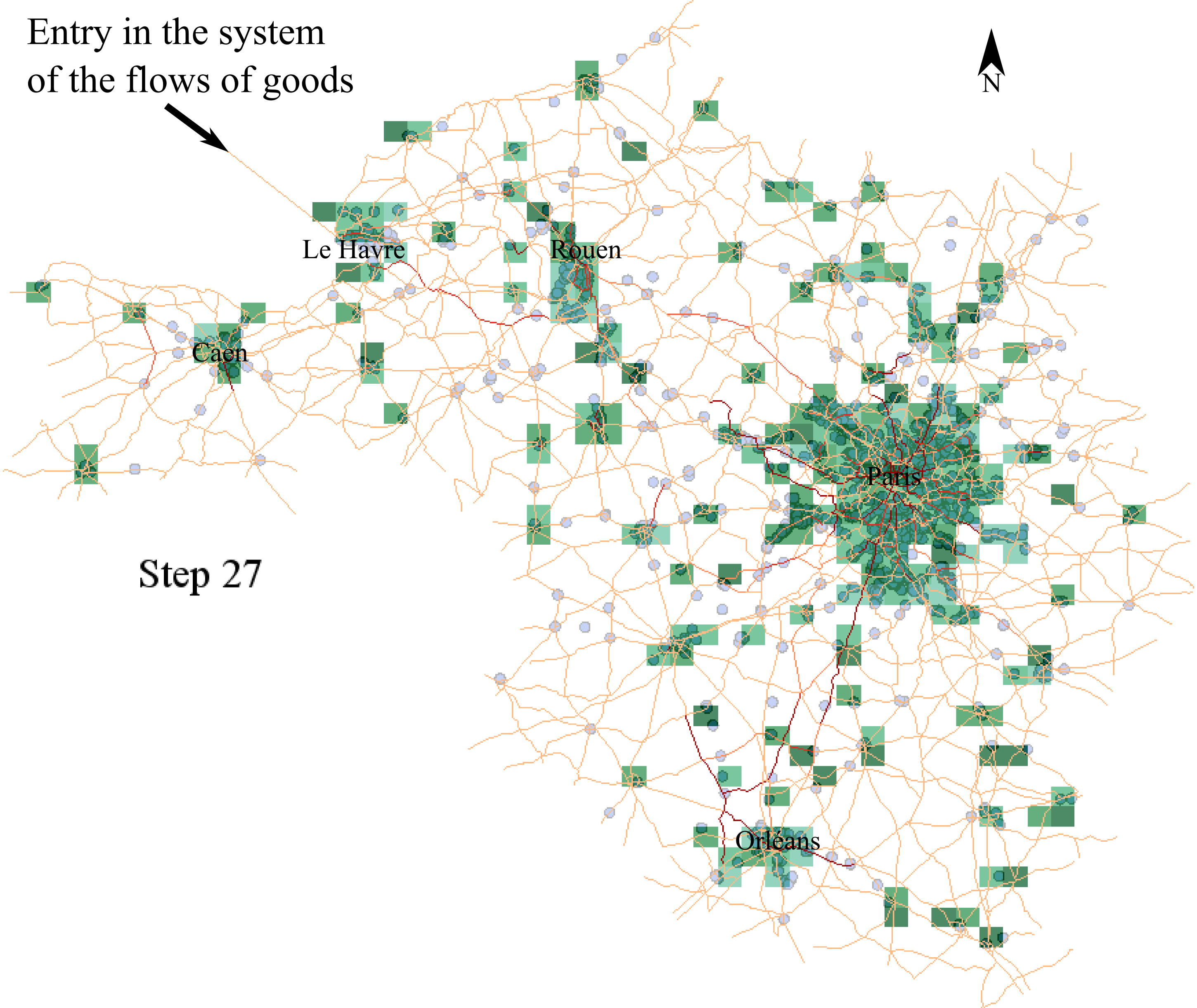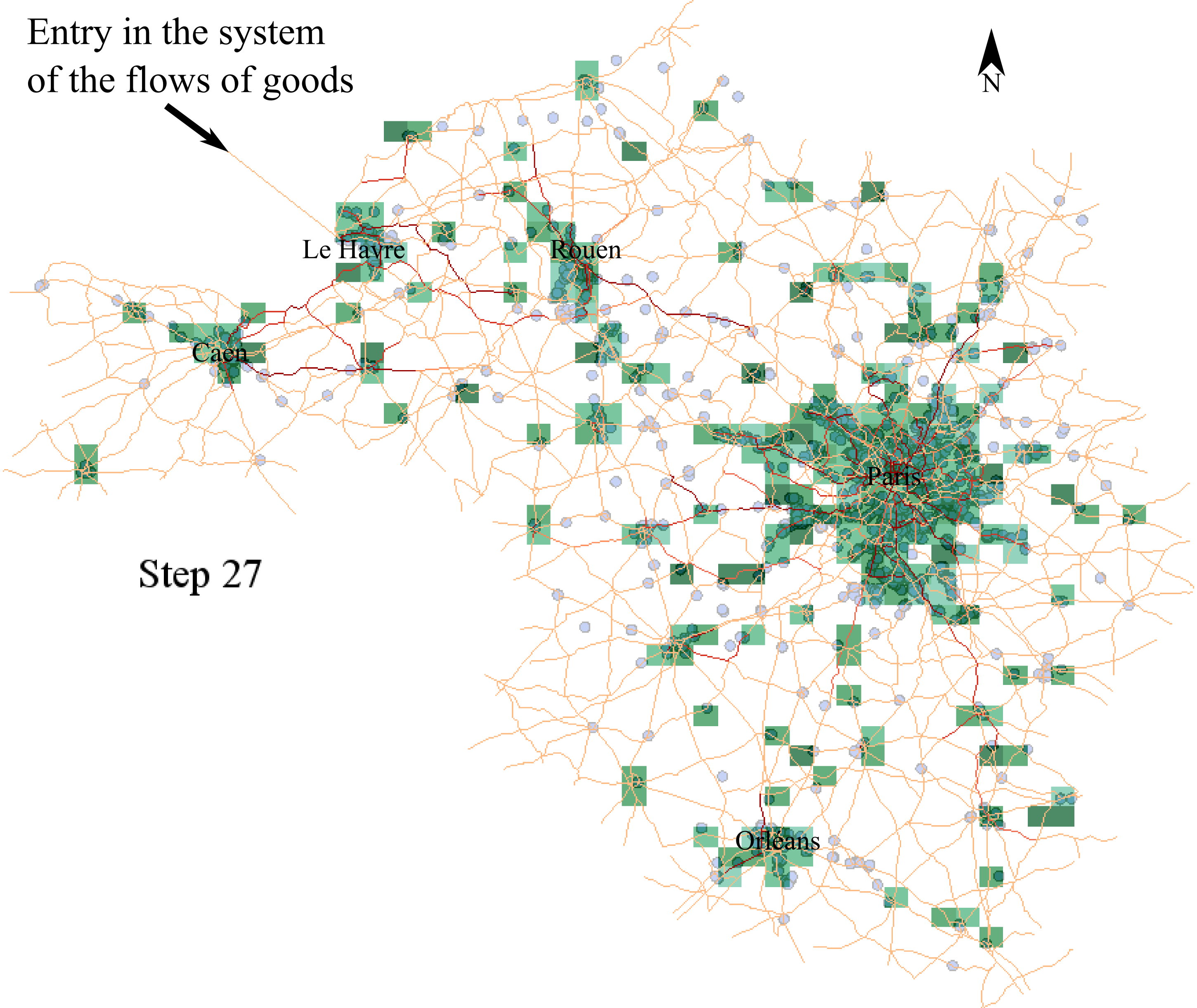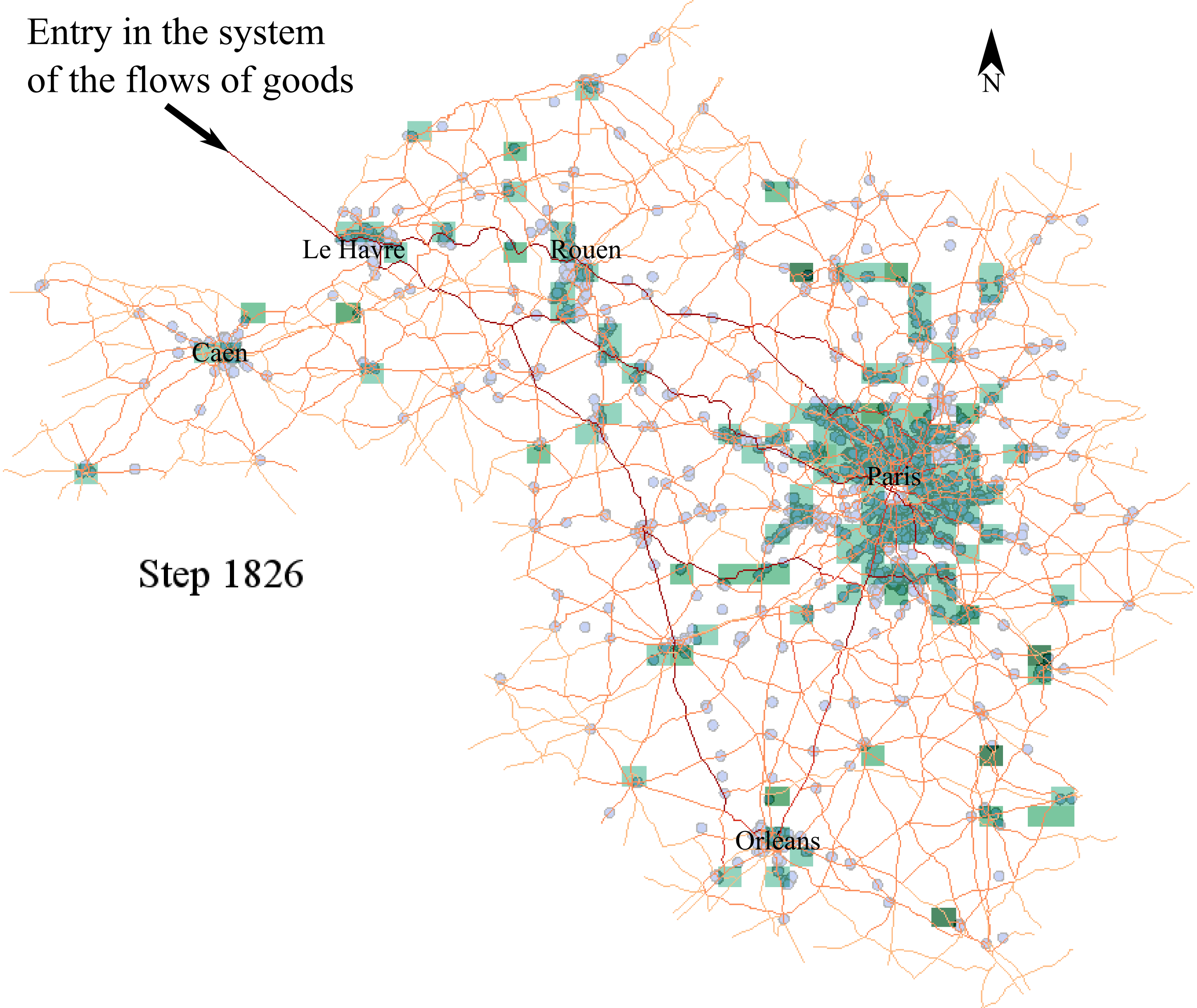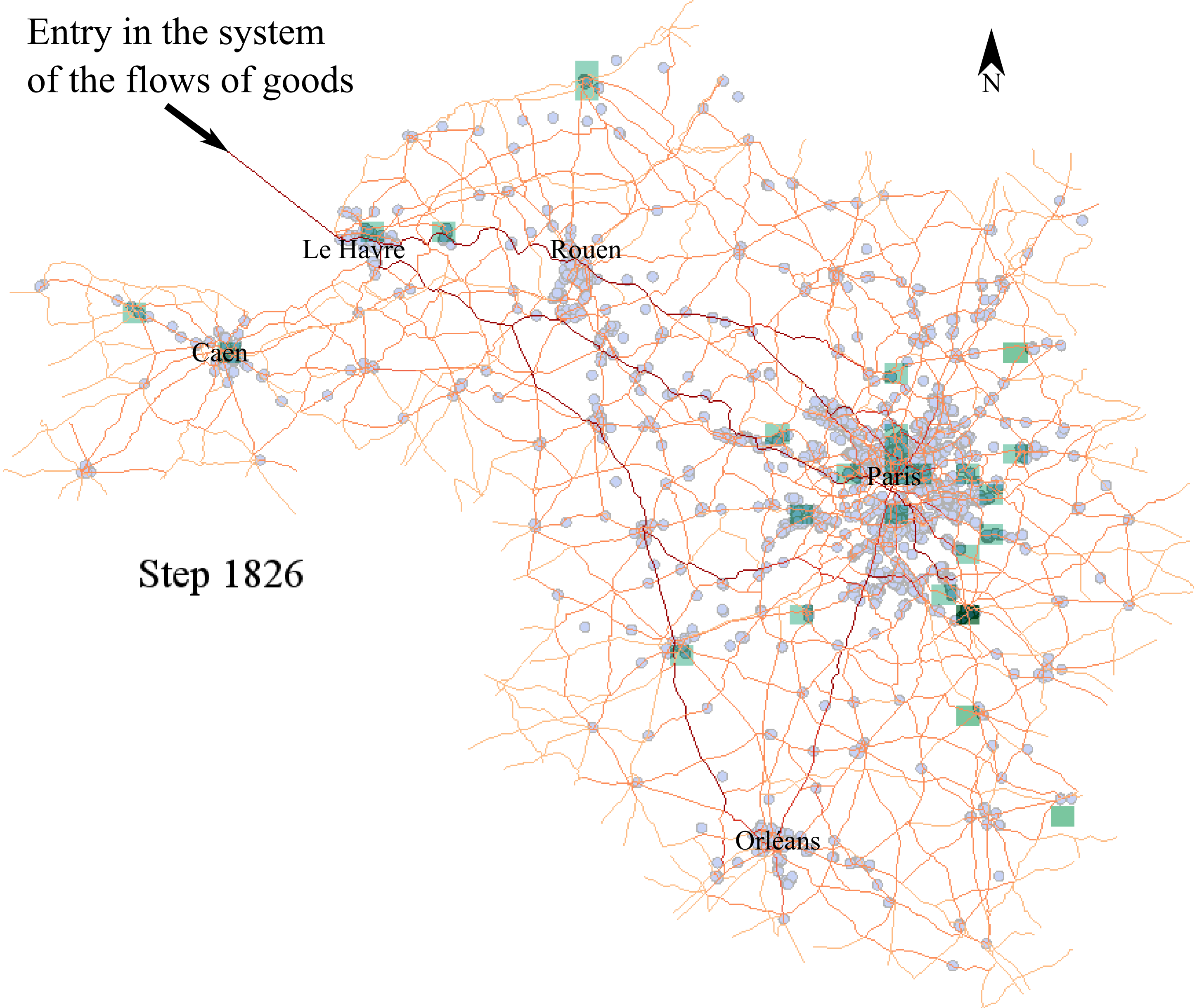thibaut.demare@univ-lehavre.fr
May 20-22, 2015
Logistic Corridors Modelled with Agent-based Approach and Dynamic Graphs
Thibaut Démare
Cyrille Bertelle, Antoine Dutot and Laurent Lévêque
LITIS and UMR-IDEES - Université du Havre
ICALT 2015 - Valenciennes, France
May 20-22, 2015
Outlook
- Context and problematic
- Modelling of a logistic corridor
- Results and discussion
Context and problematic
How do we define a logistic system?
- It is a geographical space composed of urban areas and of logistic structures.
- These structures support organised flows of goods which mainly move between the urban areas, forming logistic corridors.
- The goods enter and leave the system through well-known access nodes.
- There are numerous and heterogeneous actors (importers, exporters, freight forwarders, logistic providers,...). Their behaviours and interactions with each other allow to organise the flows of goods.
- Different constraints (spatial, economical, political, or ecological) act over the system.
Context and problematic
Each logistic system has its advantages and disadvantages. But all can be improved.
- We first have to understand how these systems are organised and structured.
- And then we could provide solutions to improve the logistic systems.
A multi-scale approach
The emergence of communities:
- The numerous and heterogeneous actors have their own local behaviours and they interact with each other locally at the micro level. They are auto-organised.
- At a higher level, we can observe communities, or clusters, of actors strongly connected (e.g. the maritime cluster).
The emergence of logistic corridors:
- It is the decisions from the micro level who determine the paths followed by the goods.
- And at the macro level, there are overall patterns of structured flows of goods following specific paths. The flows are atomised as they reach the final customers.
The logistic systems are complex
Pierre Collet defines a complex system as below:
Complex systems are every system composed of an important number of autonomous entities in interaction, creating many levels of collective organisation leading to emergent properties.
We can perceive the logistic systems as complex and use the concepts of the complexity science to model such a system.
Modelling of logistic corridors
Why the agent-based approach?
Definition
- An agent is an autonomous entity who have his own behaviour and properties.
- He evolves in an environment which he can observe and manipulate.
- The environment can welcome many agents of different natures.
Specific advantages to this problem:
- Agents are compatible with spatiality.
- Agent-based models bring flexibility: it can be adapted to different logistic system with different constraints and rules (different working behaviours, different laws,...).
- The model can be easily coupled with other models such as dynamic graphs or gravitational model (e.g. Huff's model).
Actors modelled as reactive agents
Figure 1 : Network representation of possible interactions between agents
Actors modelled as reactive agents
Figure 1a : Network representation of possible interactions between agents
Actors modelled as reactive agents
Figure 1b : Network representation of possible interactions between agents
Actors modelled as reactive agents
Figure 1c : Network representation of possible interactions between agents
Actors modelled as reactive agents
Figure 1d : Network representation of possible interactions between agents
Why dynamic graphs?
- In the reality, the flows of goods evolve in time.
- In the reality, the actors do not have always the same collaborators.
- Dynamic graphs can represent that.
- The model has a discrete time. At each step, the graphs used can change:
- The number of nodes and edges (the topology is updated).
- The data on these nodes and edges (e.g. the capacity of vehicles on a road).
Where are used the dynamic graphs?
- To represent the network of interaction between the agents.
- To represent the transportation network and its traffic.
- To represent the possible paths that can be chosen by the actors to transport the goods.
Results and discussion
The implementation
- The implementation, focused on the movements of imported goods, has been developed on the agent-based simulation platform GAMA.
- The Seine axis is used as a case study.
- There are one unique foreign provider, some final destination managers, some warehouses and some logistic providers.
Results of the simulation

Figure 2a: Threshold at 20%

Figure 3a: Threshold at 30%
Results of the simulation

Figure 2b: Threshold at 20%

Figure 3b: Threshold at 30%
Discussion
- The logistic corridors are highlighted. They emerged from behaviours of agents and they contribute to the atomisation process.
- With a higher threshold, the logistic providers are more adapted to perturbations. The buffer function of the logistic system is more efficient. However, it means more transportations. Therefore, the simulation could be used to optimise such a parameter.
Conclusion
- A logistic system is made of corridors.
- It can be seen as a complex system.
- We used an agent based model and dynamic graphs to represent such a system.
- The results show how we have highlighted the logistic corridors.
- The simulation can allow us to optimise some parameters to make the system more resistant to perturbations.
- As a perspective, we want to study the interaction network in order to detect the communities of actors.
- A first step to do that is presented in the paper and is based on the used of neighbourhood graph to detect spatial clusters.
Thanks for your attention !
Any questions?
thibaut.demare@univ-lehavre.fr